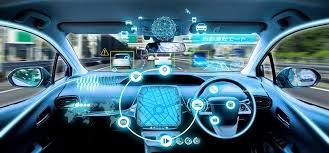Autonomous Vehicles: How Self-Driving Cars Will Change Transportation Forever
The advent of autonomous vehicles (AVs) represents one of the most transformative shifts in transportation history. With advancements in artificial intelligence, sensor technology, and connectivity, self-driving cars are poised to reshape our cities, our economies, and our very way of life. This exploration delves into the multifaceted impact of AVs, examining their potential benefits, challenges, and the broader implications for society.
The Rise of Autonomous Vehicles
Autonomous vehicles are equipped with advanced technologies that allow them to navigate and operate without human intervention. These vehicles utilize a combination of cameras, radar, lidar, and artificial intelligence to perceive their environment, make decisions, and execute driving tasks. Companies like Waymo, Tesla, and traditional automotive manufacturers are at the forefront of this revolution, investing billions in research and development to bring fully autonomous vehicles to market.
The push for AVs is driven by a variety of factors, including the need for safer roads, reduced traffic congestion, and improved mobility for underserved populations. As urban populations swell and the number of vehicles on the road increases, the traditional transportation model faces significant challenges. Autonomous vehicles promise to address these issues through enhanced safety and efficiency.
Safety and Reduced Accidents
One of the most compelling arguments for self-driving cars is their potential to dramatically reduce traffic accidents. Human error is responsible for approximately 94% of all traffic collisions, according to the National Highway Traffic Safety Administration (NHTSA). AVs, with their ability to consistently monitor their surroundings and react faster than a human driver, could significantly lower the incidence of accidents. The use of machine learning algorithms allows these vehicles to learn from countless driving scenarios, potentially leading to safer roads for all users.
Moreover, AVs can communicate with one another and with traffic infrastructure, creating a networked environment that optimizes traffic flow and reduces the likelihood of collisions. This connectedness can enhance emergency response times, as vehicles can alert first responders in real-time during accidents.
Efficiency and Traffic Management
Autonomous vehicles also have the potential to transform urban traffic management. With their ability to communicate and make real-time decisions, AVs can reduce traffic congestion by optimizing routes and maintaining steady speeds. This could lead to shorter travel times and reduced fuel consumption, benefiting both the environment and commuters.
The implementation of AVs could also lead to a reduction in the need for parking spaces. With self-parking capabilities, vehicles can drop off passengers and park themselves in less congested areas, freeing up valuable urban real estate. This shift could lead to redesigned cities that prioritize pedestrian spaces, parks, and community areas over parking lots.
Enhanced Mobility for All
Another significant impact of autonomous vehicles is their potential to enhance mobility for individuals who are unable to drive, including the elderly and people with disabilities. AVs can provide a new level of independence for these groups, allowing them to access transportation without relying on family members or public transit. This increased accessibility could lead to improved quality of life and greater social inclusion.
Additionally, autonomous ride-sharing services could become commonplace, providing an economical alternative to traditional car ownership. This shift could reduce the number of vehicles on the road, further alleviating congestion and environmental impact.
Environmental Impact
The integration of autonomous vehicles into the transportation ecosystem could have substantial environmental benefits. Many AVs are being designed with electric powertrains, which can reduce greenhouse gas emissions and reliance on fossil fuels. Furthermore, the optimization of traffic flow and reduction of congestion can lead to lower overall emissions from the transportation sector.
However, it is essential to consider the full lifecycle impact of AVs, including manufacturing and battery production, to ensure that the transition to self-driving technology contributes positively to environmental goals.
Challenges and Considerations
While the benefits of autonomous vehicles are promising, several challenges must be addressed before they become a mainstream reality. Regulatory frameworks are still being developed to govern the testing and deployment of AVs. Ensuring safety, liability, and data privacy are critical concerns that need to be navigated carefully.
Public acceptance is another significant hurdle. Many people remain skeptical about the safety and reliability of self-driving technology. Comprehensive education and transparent communication about AV capabilities and limitations will be essential in building public trust.
Furthermore, the transition to AVs will impact various sectors, including automotive manufacturing, insurance, and public transportation. Stakeholders must consider how to adapt to these changes, ensuring a smooth transition that benefits society as a whole.
The Future of Transportation
As we look to the future, it is clear that autonomous vehicles will play a pivotal role in shaping the transportation landscape. The convergence of technology, urban planning, and policy will dictate how this transformation unfolds.
Self-driving cars hold the promise of safer roads, reduced congestion, and increased mobility for all. While challenges remain, the potential benefits make it imperative to continue investing in research, regulation, and public education. As we navigate this new terrain, collaboration among policymakers, technology developers, and communities will be crucial to realizing the full potential of autonomous vehicles and creating a transportation system that serves everyone effectively.
In conclusion, the rise of autonomous vehicles represents not just a technological advancement, but a fundamental shift in how we conceive of transportation. With careful consideration and strategic planning, self-driving cars could indeed change transportation forever, leading us into a future that is safer, more efficient, and more inclusive.











